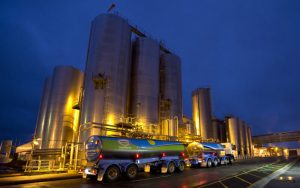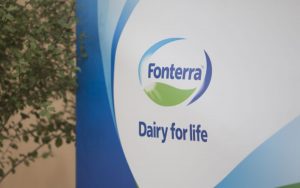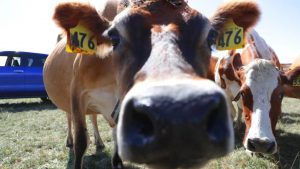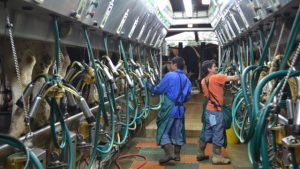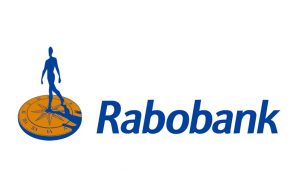
Contracts had to be renegotiated, the value of his herd dropped by about half, and his hope of buying a farm hung in the balance.
Mycobacterium tuberculosis, the virus that causes TB, is a problem not only because it makes livestock sick but because TB can pass from animals to humans.
Johnston’s farm sits on the outskirts of the Hokonui Hills. This forested area has high numbers of possums and because they can carry TB, the entire area is seen as high-risk.
There is no way of knowing how Johnston’s first cow contracted TB.
He thinks a possum with TB came out of the hills and died. A ferret then ate the possum’s remains and then went for a walk and died on his farm.
Cows are naturally inquisitive and a nosey cow could have sniffed the ferret carcass and caught TB through aerosol transmission, Johnston says.
Herds from the entire region next to the Hokonui Hills are tested for TB once a year, he says.
In 2011, cow 181 tested positive in a TB skin test.

To test for TB, a tuberculin was injected under a cow’s tail, just under its skin. If a cow had TB there would be a raised lump where it was injected a few days later.
An independent company, Ospri, manages testing and also keeps tabs on positive herds in New Zealand and advises farmers on management.
Johnston’s cow had a raised lump, so went on to have TB confirmed in a blood test. The test also came back positive, and the cow was slaughtered to have its lungs and lymph nodes inspected.
No sleep for days
Johnston says Ospri told him not to panic when his cow tested positive, and to wait for conclusive results before he did anything. Results could take weeks.
But he did not operate like that. That night, he phoned all his neighbours and told them of the positive test. Because he was a sharemilker back then, he also phoned the farm owner.
The business impact was immediate.
Earlier in the year, Johnston had contracted a number of farms to graze his cows on through winter.
The positive result was received six weeks before he had to move his cows to these farms. He now had to renegotiate all his contracts.
“You start every negotiation on the back foot,” Johnston says.
Luckily, most of the deals he made were with people he had good relationships with.
In some cases, an Ospri epidemiologist had to explain to farm owners how TB worked and how animals would have to be managed. All animals also needed movement certificates.
In the beginning he felt alone.
“You can’t just pick up a phone and call your neighbour for advice. There are such low case numbers in New Zealand that no-one in the region had dealt with it before.”
After the positive test, Johnston did not sleep for three days.
He did not know if his farm would be shut down, how many of the herd needed to be culled or if he would have to dump possibly infected milk.
When he phoned Fonterra, it was hard to find someone who could answer his questions. There were just so few herds with TB in it that it was not a question anyone often asked.

All Fonterra’s milk is pasteurised and he could keep delivering milk without worrying that people would fall ill.
Before that first positive test, Johnston had planned to buy his own farm. That plan now hung in the balance, because the worth of his cows had decreased the instant one of them tested positive for TB, he says.
A dairy cow at that time was worth about $1600. Its worth is tied to the fact that it can produce milk that can be sold and that it produces offspring.
On paper, a cow with TB is worth only the money you can get for slaughtering it for meat. Meat from a cow with TB is safe to eat but a meat cow is worth half the amount of a dairy cow.
The bank did not know how to handle the worth of Johnston’s herd. This in turn affected how much he could loan from the bank.
On his own, Johnston had enough money to buy a property that could feed 250 cows. He would have had to sell his other 250 cows but no-one would want to buy cows that possibly had TB.

A neighbour stepped in and sold him enough land for 250 cows and gave him a lease for land that would feed the other 250 cows. He was also given the option to buy the land once the herd was clear of TB.
Johnston says if there was not TB in the herd, he would not have thought of asking for such an opportunity and would have given up as he could not afford it.
He became a “control freak”, and began to understand each aspect of his business and animal health.
He kept cow numbers low, so he could control them and feed them through winter on his own farm.
He now buys 1500 bales each winter to feed his herd. He has simple systems, controls his feed and feels he is resilient as a result.
“We do less production and have less income but because of the amount of control we have over the farm, we have fewer costs and fewer risks. It is profitable but very different from what it would have been if we didn’t have TB on the farm,” Johnston says.

How to be TB-free
Sixty days after the first test, the whole herd was tested again. By then, the herd was wintering on a farm nearby. As the farm did not have yards to hold animals in for testing, he had to move the entire herd to his farm, have them tested and move them back again. A few days later, he had to move the herd back to his farm again for a follow-up test, he said.
The entire community jumped in to help him move cows, he says.
On that second test, another four cows reacted to the skin test. The follow-up blood tests showed three were false positives and one was positive.
At 90 days, another test was done. Once again, a single cow tested positive.
For a herd to be cleared, it has to have two negative tests. It took another two years for this to happen. His herd was seen as negative in 2013, he said.
At one stage, he considered selling the entire herd and beginning over. But Ospri and the close farming community helped him get through his doubts.
Pest control is one of the best ways to stop the spread of TB. History has shown that if farmers stop taking it seriously, then low TB infections skyrocket, he says.
Stuff tried to speak to farmers whose herds recently tested positive for TB but they declined to talk.
Johnston understands. When your herd tests positive there are many uncertainties and if infection is not handled well the entire business suffers.
Numbers trending down
Ospri epidemiologist Dallas New said that in September this year there were 23 infected herds in the country – 11 beef and 12 dairy herds.
There were no commercial deer herds infected. These numbers tended to fluctuate through the year but were generally trending down, New said.
The bacteria that caused bovine TB was sneaky and challenging to detect in animals, she said.
TB infections peaked in 1994, with more than 1700 cattle and deer herds infected with TB. This represented a herd infection prevalence of more than 2%, far higher than in most other developed countries, New said.

TB is an unwanted disease in New Zealand because the country’s economy is dependent on top-quality disease-free agricultural exports.
The effect of any actual or perceived compromise on animal health from a disease could affect markets and mean production losses for farmers and exporters, New said.
Ospri’s first priority was clearing livestock of TB and to eliminate risk of transmission from possums near livestock herds.
The group aimed to have no possum infected with TB by 2040. It also needed to clear TB from deer and pigs. By 2055, the group wanted no TB in cattle at all, she said.




